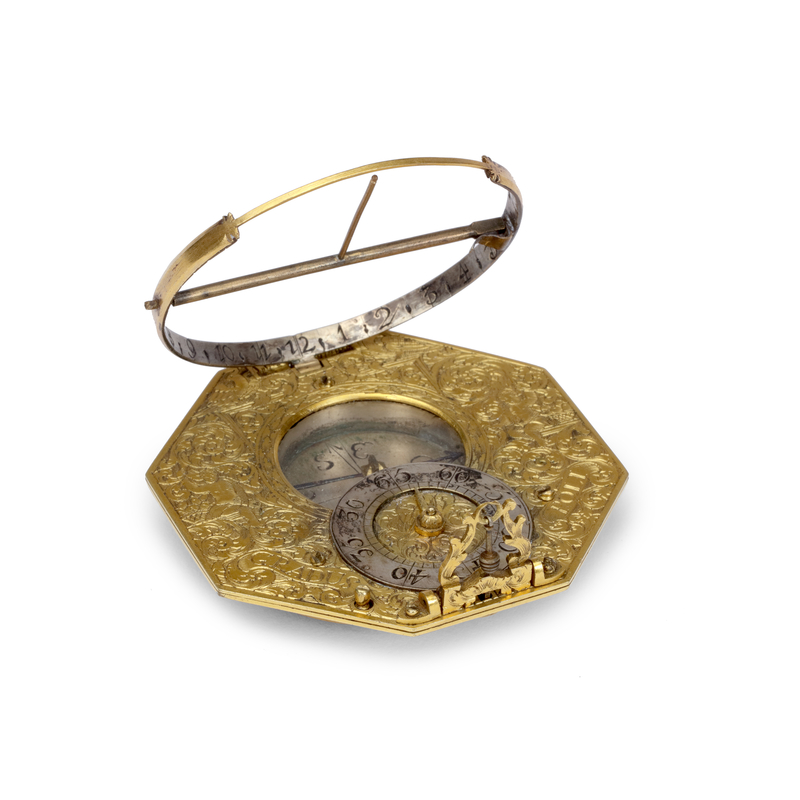Mechanical equinoctial sundial
Global shipping available
- Origin
- Augsburg, Germany
- Period
- End of 17th century
- Material
- Silver, Gilt brass, glass
- Signature
- Nicolaus Rugendas
- Height
- 2.2 cm
- Width
- 6.9 cm
- Depth
- 7 cm
- Literature
E. Zinner, Deutsche und Niederländische Astronomische Instrumente des 11. - 18. Jahrhunderts, München 1979, p. 494, 495.
G. Baptiste (ed.), Tijdmeting in Belgische verzamelingen, Brussel 1984, p. 93, cat. no 97.
M. Cowham, A dial in your poke, Dorset 2004, pp. 107 - 113.- Museums
Mechanical sundial, Nicolaus Rugendas; History of Science Museum, University of Oxford, inv. nr. 47102.
Questions about this object?
Please use one of the contact options below:
Description
This very refined mechanical equinoctial pocket sundial was made in Augsburg by Nicolaus Rugendas. The octagonal sundial is equipped with a mechanism that automatically adjusts the sundial to the correct latitude. The user sets the hand of the silver latitude scale ring, which ranges from 0 to 65 degrees, to the correct latitude, using the information engraved on the bottom of the sundial. By pressing the button, the hour ring automatically jumps to the correct position. Then, one raises the gnomon manually. In the octagonal engraved base is a glass-covered space for the compass. When the compass needle is pointed to the north and the hour ring is set to the right position, the time can be read from the striking shadow of the gnomon. Opposite the hour ring, which indicates both hours and half hours, is the plumb bob, in a folding frame. The whole sundial rests on three small feet.
The directions on the compass are indicated by the letters O|C, S|E, O|R, M|E: Occidentalis, Septentriones, Orientalis, Meridianus. The octagonal base is decorated with engraved curly floral work, with a ring of leaves around the compass, and on either side of the compass a seated cherub with a basket of fruit beside him. Next to the degree ring are the words GRADUS POLI. On the back of the sundial is a list of cities and their ascending longitudes, so the owner could use the pocket sundial in several places (Jerusalem, Naples, Madrid, Rome, Constantinople, Genoa, Venice, Trier, Galle, Offen, Vienna, Paris, Salzburg, Straßburg, Munich, Heidelberg, Nürnberg, Regensburg, Frankfurt am Main, Prague, Mains, Cologne, Leipzig, Dresden, London, Berlin, Amsterdam, Hamburg, Stettin, Copenhagen and Stockholm). At the bottom of this list is the signature 'Nicolaus Rugendas, Augspurg 48'.
Nicolaus Rugendas was part of a prominent family of clockmakers in Augsburg. Three generations - Nicolaus I (1585 - 1658), Nicolaus II (1619 - 1694), Nicolaus III (1665 - 1745) - specialised in both clocks and sundials and were members of the guild. A number of mechanical sun and moon dials have survived from Nicolaus II, although it is not entirely clear whether some of these mechanical hands can be attributed to his father.








